As AI adoption accelerates in financial services, MLOps has become essential for managing model risk, ensuring regulatory compliance, and enabling scalable deployment. This article explores the critical role of MLOps in banking—from fraud detection to credit scoring—while highlighting key challenges, maturity stages, and best practices for implementing trustworthy, explainable, and agile machine learning systems in a complex financial landscape.
In today’s data-driven financial landscape, machine learning operations (MLOps) have emerged as a critical framework for banking and financial institutions seeking to leverage AI effectively. As financial services organizations increasingly rely on machine learning models for decision-making, detecting fraud, personalizing customer experiences, and managing risk, ensuring transparency, governance, and reliability through MLOps is essential to mitigate model risk and and support sustainable model risk management practices.
This is especially important as risks can arise from data drift, model bias, lack of explainability, and regulatory non-compliance.
The Rise of ML in Financial Services
Banks and financial institutions have been at the forefront of AI adoption, using machine learning (ML) for various critical functions. One leading financial institution achieved 40% faster validation of third-party credit risk models using machine learning, demonstrating the tangible benefits of advanced model operations. It also helps in –
- Fraud detection and prevention – Identifying anomalous transactions in real-time
- Credit scoring and risk assessment – Evaluating creditworthiness with greater accuracy
- Customer segmentation and personalization – Tailoring products and services to specific needs
- Market prediction and algorithmic trading – Making data-driven investment decisions
- Regulatory compliance and anti-money laundering (AML) – Screening transactions for suspicious patterns
- Operational efficiency – Automating routine tasks and improving back-office functions
The Critical Need for MLOps in Banking
The true challenge lies not in developing AI/ML-based models—but in deploying, managing, and governing them effectively at scale. Poorly governed machine learning models can introduce financial risk, compromise compliance, and erode customer trust.
This is where machine learning operations (MLOps) plays a pivotal role—providing a structured framework to align model development and deployment with enterprise-wide governance, compliance, and risk management standards.
However, unlike conventional software development, machine learning systems in financial services face particular challenges:
- Data Drift and Model Decay
Financial markets are inherently volatile, with consumer behavior, market conditions, and regulations constantly evolving. A 2023 McKinsey survey found that 56% of financial institutions experienced significant model drift in at least one of their machine learning models, largely due to changing customer behavior and external market volatility. Models trained on historical data quickly become outdated, leading to inaccurate predictions and potentially harmful decisions.
- Regulatory Scrutiny and Compliance
Financial institutions operate under stringent regulatory frameworks like GDPR, Basel III, and industry-specific requirements. Models must be explainable, fair, and auditable. Regulators increasingly require documentation of model lineage, validation processes, and bias testing – all facilitated by MLOps practices.
- Security and Data Privacy
Banking data is highly sensitive. MLOps frameworks in financial services must incorporate robust security measures, ensuring data protection throughout the model lifecycle while maintaining appropriate access controls.
- Time-to-Market Pressures
In the competitive financial landscape, the ability to rapidly deploy and update models can provide a significant edge. Traditional model deployment cycles in banking often take months – an unsustainable timeframe in today’s fast-moving market.
Key Components of Financial MLOps
1. Continuous Integration and Delivery for ML Models
In banking applications, CI/CD pipelines must be adapted to account for both code and data dependencies. This means:
- Automating model training with fresh data
- Conducting rigorous validation against regulatory requirements
- Implementing canary deployments to minimize risk
- Maintaining model versioning and artifact management
A major UK financial institution leveraged MLOps to reduce their model deployment time from 60+ days to just 7 days, enabling faster responses to market changes while maintaining compliance.
2. Model Monitoring and Performance Management
For financial services, model monitoring goes beyond accuracy metrics to include:
- Drift detection for both data and concept drift
- Performance monitoring across different customer segments
- Compliance with fairness, bias mitigation, and model risk thresholds as defined by internal model risk policies and regulatory frameworks like SR 11-7
- Business impact assessment of model decisions
Dutch banking consortium ING implemented MLOps monitoring systems that allowed them to detect model drift early during the pandemic, preventing potentially misleading predictions in their credit risk models.
3. Model Governance and Documentation
Financial institutions must maintain comprehensive model documentation for both internal risk management and regulatory compliance:
- Model cards detailing model specifications, training data, and limitations
- Audit trails of all training runs and deployments
- Version control for both models and datasets
- Explainability documentation for complex models
These capabilities are foundational to a modern model risk governance function. A strong MLOps pipeline reinforces the principles of accountability, traceability, and explainability, which are core to meeting regulatory expectations for model validation and independent review.
Maturity Levels of MLOps in Financial Services
Most financial institutions progress through distinct levels of MLOps maturity:
Level 0: Manual Process
Characterized by disconnected teams, manual deployments, and minimal monitoring. Unfortunately, many banking institutions still operate at this level, with data scientists working separately from engineering teams, resulting in the “model handoff problem” where models fail to transition effectively from development to production.
Level 1: ML Pipeline Automation
At this level, financial institutions automate the training and deployment of ML models but may still lack robust monitoring and governance. Banks at this stage often struggle with model drift in volatile markets but benefit from faster deployment cycles.
Level 2: CI/CD Pipeline Automation
Here, banks implement continuous integration and deployment for both ML code and infrastructure. This allows for rapid iteration and testing, crucial for time-sensitive applications like fraud detection and trading algorithms.
Level 3: Full MLOps with Governance
The most advanced financial institutions implement end-to-end MLOps with robust governance frameworks. This includes automated compliance checks, model explainability tools, and business impact monitoring. Models are treated as products with full lifecycle management.
Challenges Specific to Banking MLOps Implementation
1. Legacy Infrastructure Integration
Many banks operate on decades-old core banking systems that weren’t designed for modern ML workflows. Successful MLOps implementations must bridge legacy systems with modern cloud infrastructure.
2. Cross-Functional Collaboration
Banking has traditionally operated in organizational silos. MLOps requires close collaboration between data scientists, IT operations, compliance teams, and business stakeholders – often necessitating cultural and organizational changes.
3. Balancing Agility with Stability
Financial services require both innovation and stability. MLOps frameworks in banking must enable rapid experimentation while ensuring robust testing and validation before production deployment.
Best Practices for Financial Institutions
- Start with Governance Frameworks
Unlike other industries where governance might be added later, financial institutions should begin with strong governance models that incorporate regulatory requirements from the outset.
- Implement Feature Stores
Centralized feature stores allow for consistent feature engineering across models and applications, crucial for maintaining coherent customer experiences across banking channels.
- Adopt Explainable AI Practices
Models making financial decisions must be explainable. MLOps should incorporate tools and processes for model interpretability, particularly for credit decisions and risk assessments.
- Establish Model Performance Baselines
Financial institutions should define clear performance thresholds for models, including both technical metrics and business impact measurements, with automated alerting when thresholds are breached.
- Incorporate Fairness Testing
Banking models must be regularly tested for bias across protected attributes. MLOps pipelines should include automated fairness assessments to prevent discriminatory outcomes.
Conclusion
For financial institutions, MLOps is not merely a technical practice but a strategic necessity. They are increasingly aligning their MLOps capabilities with formal model risk management frameworks. This includes integrating MLOps outputs into model validation workflows, aligning lifecycle documentation with audit needs, and creating feedback loops between operations and governance teams.
As banking continues its digital transformation, those institutions that master MLOps will be best positioned to leverage AI safely, effectively, and at scale. For a deeper dive into advanced approaches, our white paper on leveraging digital twins for model risk in banking explores innovative techniques for model simulation and testing in controlled environments.
By implementing robust MLOps practices, banks and financial services organizations can ensure their AI initiatives deliver sustainable value while meeting the industry’s unique regulatory and performance requirements. In an industry where trust is paramount, MLOps provides the framework for responsible, effective AI deployment.
At Anaptyss, we help financial institutions operationalize AI with strong model governance, regulatory alignment, and end-to-end managed services. Our experts work closely with your teams to seamlessly integrate AI/ML models into your operations, helping you navigate the complexities of digital transformation and realize long-term success.
To explore how Anaptyss can support your digital transformation or model risk management journey, reach out to us at info@anaptyss.com



